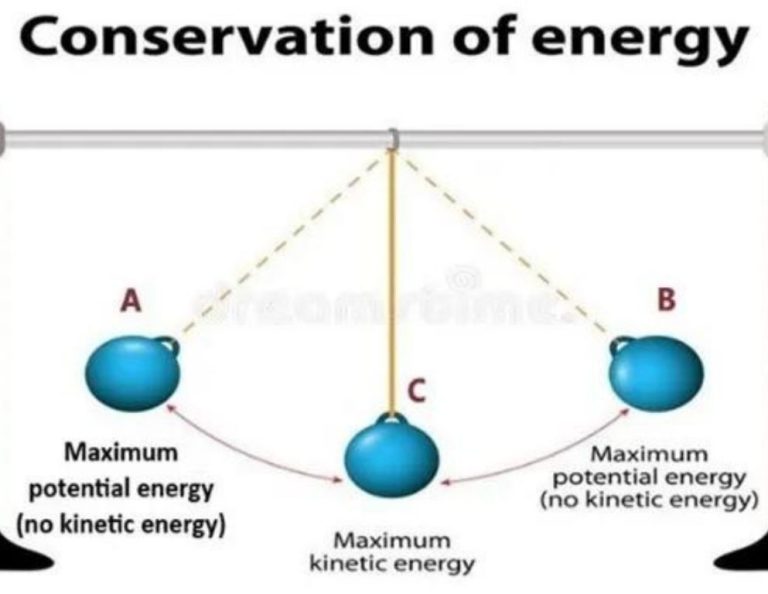How Have Humans Impacted The Carbon Cycle?
The carbon cycle is the process by which carbon moves through the Earth’s various systems, including the atmosphere, biosphere, oceans, and geosphere. Carbon is an essential building block of life and is present in all organic compounds. Through photosynthesis, plants absorb carbon dioxide from the atmosphere and convert it into sugars and plant matter. The carbon is then either consumed by animals or released back into the atmosphere through respiration and decomposition. The carbon cycle maintains a natural balance of carbon in the atmosphere.
However, since the Industrial Revolution, humans have significantly impacted the carbon cycle mainly through the burning of fossil fuels and deforestation. When fossil fuels like coal, oil, and natural gas are burned, carbon that had been stored underground for millions of years is released into the atmosphere. Deforestation also releases large amounts of carbon as trees are burned or decompose. These human activities have increased atmospheric carbon dioxide by over 40% compared to pre-industrial levels. This has disrupted the natural carbon cycle and led to consequences like global warming and ocean acidification.
Fossil Fuel Use
The burning of fossil fuels like coal, oil and natural gas releases large amounts of carbon dioxide (CO2) into the atmosphere. Fossil fuels formed underground over millions of years from dead plant and animal matter. Their carbon had been removed from the active carbon cycle but burning them mobilizes that carbon again.
The use of fossil fuels greatly increased after the Industrial Revolution as they powered machines, trains, ships and more. Today, about 80% of the world’s energy comes from fossil fuels. The US Energy Information Administration estimates global fossil fuel consumption has grown over 112% since 1980. All this fossil fuel burning has released approximately 350 billion metric tons of CO2 into the atmosphere since 1751.
Deforestation
Trees play a crucial role in the carbon cycle by absorbing CO2 from the atmosphere as they grow. Through photosynthesis, trees take in CO2 and release oxygen back into the air. The carbon absorbed by the trees is stored within their tissues, roots, branches, stems and leaves. It can remain locked away in the trees for many years.
When forests are logged or cleared for agriculture and development, significant amounts of stored carbon are released back into the atmosphere. The burning and decomposition of felled trees and cleared vegetation emits CO2. Deforestation is a major contributor to increased atmospheric CO2 levels from human activities. Estimates show deforestation accounts for 10-15% of global CO2 emissions every year.
Between 1990 and 2016, the world lost 1.3 million square kilometers of forest, an area larger than South Africa. The Amazon rainforest alone has lost over 20% of its forest cover in the past 40 years. Continued widespread deforestation is exacerbating climate change by releasing substantial amounts of previously sequestered carbon into the atmosphere.
Agriculture
Agriculture has significantly impacted the carbon cycle through activities like plowing fields and methane emissions. Plowing fields churns up soil and exposes stored organic carbon to oxygen, allowing microbes to rapidly decompose the carbon into carbon dioxide, releasing it into the atmosphere. The deep plowing techniques used in modern industrial farming have accelerated this process. Additionally, methane is a potent greenhouse gas emitted as a byproduct of digestion in livestock like cows and sheep as well as from bacteria that thrive in flooded rice paddies. Methane traps heat far more effectively than carbon dioxide, so agriculture’s methane emissions have contributed substantially more atmospheric carbon in the form of this powerful greenhouse gas.
Cement Production
Cement production also plays a significant role in CO2 emissions into the atmosphere. To produce cement, limestone (which is mostly calcium carbonate) must be heated to over 1400°C. This heating process releases CO2 gas from the limestone. The chemical reaction releases approximately 1 ton of CO2 for every ton of cement produced.
In addition, cement production is highly energy intensive. Heating the kilns requires large amounts of fuel, most often coal or natural gas. This further adds CO2 emissions to the atmosphere from cement factories. The combination of heating limestone directly, along with the emissions from energy use, makes cement production account for around 8% of global CO2 emissions each year.
Waste
Human waste production, especially organic waste like food scraps, has significantly contributed to increasing atmospheric carbon. As organic waste breaks down anaerobically in landfills, it releases methane, which is a potent greenhouse gas with 25 times the global warming potential of carbon dioxide. Globally, landfills account for an estimated 11% of human-caused methane emissions. The amount of municipal solid waste humans generate has grown tremendously over the past decades, leading to rising methane emissions. Strategies like composting, anaerobic digestion of organic waste, and landfill gas capture can help reduce methane emissions from waste. But the most impactful solution is reducing waste in the first place through prevention, reduction, reuse and recycling. Waste reduction and diversion keeps organic waste out of landfills and prevents new carbon emissions.
Impact on Atmospheric CO2
Human activities have dramatically increased the amount of carbon dioxide in the atmosphere. Prior to the industrial revolution, atmospheric CO2 levels were around 280 parts per million (ppm). Today, atmospheric CO2 levels have risen to over 400 ppm, an increase of over 40%. The primary cause of this rapid rise in CO2 levels is the burning of fossil fuels like coal, oil and natural gas.
When fossil fuels are burned, carbon that has been stored underground for millions of years is released into the atmosphere. In addition, deforestation and land use changes have reduced the ability of plants and trees to absorb CO2. The oceans have also absorbed a significant portion of human-caused CO2 emissions, causing ocean acidification.
Atmospheric CO2 levels are now higher than at any point in at least the past 800,000 years. This dramatic rise in CO2, a major greenhouse gas, is the main driver of human-caused climate change and global warming. Urgent action is needed to reduce fossil fuel use and CO2 emissions in order to avoid the worst impacts of climate change.
Ocean Acidification
As excess carbon dioxide is absorbed by the oceans, chemical changes occur that increase the ocean’s acidity. This process is referred to as ocean acidification. Since the beginning of the Industrial Revolution, the acidity of ocean surface waters has increased by about 30%. This increased acidification has negative impacts on marine organisms, especially those that build shells and skeletal structures from calcium carbonate, such as corals, shellfish, and plankton. The more acidic water dissolves the carbonate ions that these organisms need to build and maintain their structures. Studies have found that the shells of tiny marine snails, called pteropods, are already dissolving in Southern Ocean waters. Pteropods are an important food source for marine species ranging from krill to salmon to whales. Ocean acidification can also disrupt the ability of fish to detect predators, impairing many key marine processes and ecosystems.
Climate Change
Increased atmospheric CO2 and other greenhouse gases from human activities have caused measurable increases in the Earth’s temperature over the past century. The planet’s average surface temperature has risen about 1.62 degrees Fahrenheit (0.9 degrees Celsius) since the late 19th century. Most of the warming has occurred in the past 35 years, with 16 of the 17 warmest years on record occurring since 2001. Not only was 2016 the warmest year on record, but eight of the 12 months that make up the year — from January through September, with the exception of June — were the warmest on record for those respective months.
Rising global temperatures have been accompanied by other changes around the world. Many places have seen changes in rainfall resulting in more floods, droughts, or intense rain, as well as more frequent and severe heat waves. The planet’s oceans and glaciers have also experienced changes: oceans are warming and becoming more acidic, ice caps are melting, and sea levels are rising. All these changes are evidence that our planet is getting warmer.
The effects of climate change are far-reaching. Climate change impacts fragile ecosystems through extreme weather, the thawing of permafrost, and ocean acidification from CO2 absorption. It increases the frequency and intensity of natural disasters that displace people and disrupt agriculture. Climate change also poses risks to human health from heatwaves, droughts, air pollution, allergens, and disease spread. Without substantial action to mitigate climate change, these impacts will continue to intensify over the coming decades.
Mitigation Efforts
There are various ways humans can mitigate the impact we’ve had on the carbon cycle and work to restore balance. Some key methods include:
Renewable Energy
Transitioning from fossil fuels to renewable energy sources like solar, wind, geothermal, and hydropower will reduce carbon emissions. Renewables made up over 25% of global electricity generation in 2018 and are growing rapidly as costs fall and technology improves.
Reforestation
Planting trees sequesters carbon in both the trees and soil. Reforestation projects are underway in many countries to help offset deforestation and increase natural carbon sinks. However, reforestation needs to be carefully managed to ensure biodiversity and ecosystem benefits.
Carbon Sequestration
Emerging technologies like carbon capture allow CO2 to be captured from sources like power plants and sequestered underground. While expensive, it has the potential to reduce emissions from fossil fuel use. Natural sequestration methods like soil carbon storage can also help.
More radical carbon dioxide removal ideas are also being researched, such as direct air capture and storage of CO2. The aim is to actively reduce CO2 levels by removing it from the atmosphere.
Mitigation efforts will require a multi-pronged approach across industries, innovation, policy and individual action. With coordinated efforts, we can curb human impacts on the carbon cycle and work towards climate stability.





